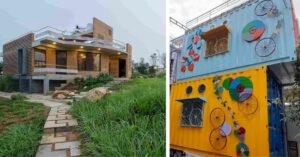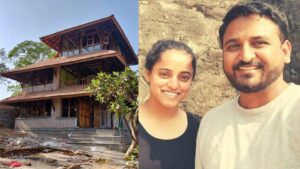Red Oxide Floor, Reused Roof Tiles: How This Sustainable Kerala Home Saves Electricity
Ragesh T built a sustainable family home ‘Geetham’ in Thrissur with the help of architect Shantilal from Costford. Learn more about its unique features.
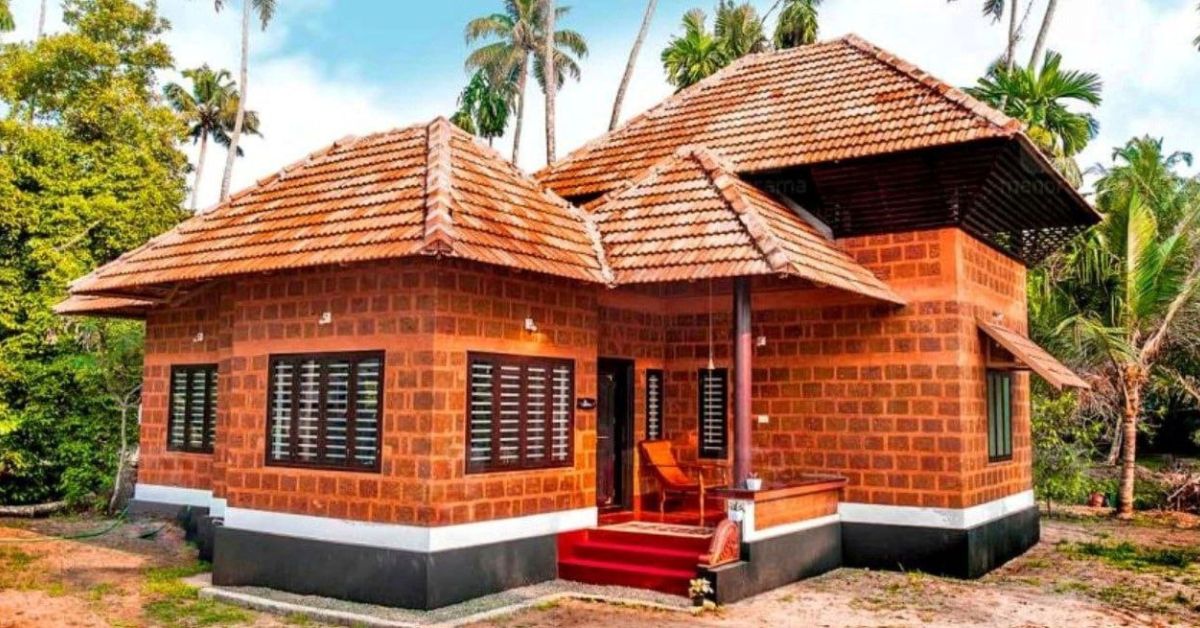
In Emmad, a serene village located in the border area of Thrissur district, lies a traditional house that stands out because of its unique model and simplicity.
While Ragesh T decided to build his own house on the outskirts of the city, his only desire was that it should be sustainable and have a dedicated space to encourage his interest in reading as well as music.
“Our idea was simple,” says Ragesh, a teacher by profession, “giving zero importance to luxury and artificiality. Located in a calm area, we wanted to preserve the ambience of our plot and bring in as much natural air and light into the home as possible.”
On learning this, Ragesh’s friends directed him to Shanitilal, who runs an architectural company called Costford in Thriprayar, which focuses on constructing eco-friendly buildings.
Highly experienced in the field of sustainable architecture, Shantilal was more than pleased to take up the project. He came up with a plan of action to build an alluring house that would stand out from the standard cement buildings we see everywhere.
Choosing sustainable architecture
As the family needed only two bedrooms, the architect decided to build a single-storeyed house, but with the facilities of a double-storeyed one.
“My plan was to build the house at an above-normal height to help lower the temperature inside and attract plenty of daylight. The family supported this idea,” says Shantilal.
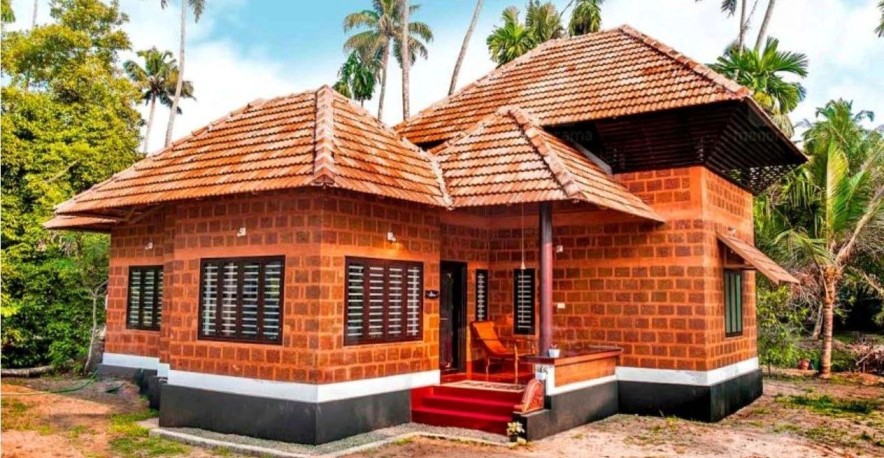
The walls of the house ‘Geetham’ were built using red stone, giving it a traditional look. The outer walls were left unplastered following the exposed style of construction. Whereas, the interiors were plastered using a quirky eco-friendly mix of mud, jaggery, lime and myrobalan (haritaki).
“In almost all the sustainable houses I have designed so far, I’ve used this plastering mix to keep the walls strong just like cement. Moreover, by leaving out cement, the cost is reduced tremendously,” shares Shantilal.
The architect continues, “I used old roof tiles above a waterproofed bamboo sheet to avoid possible leakage issues in future. All the doors, windows and furniture were to be made using recycled wood, but unfortunately due to the advent of the pandemic, we faced some challenges and went ahead with steel frames and wooden planks instead.”
He says that the doors, windows, staircase, dining table and benches have been built to last for years without maintenance.
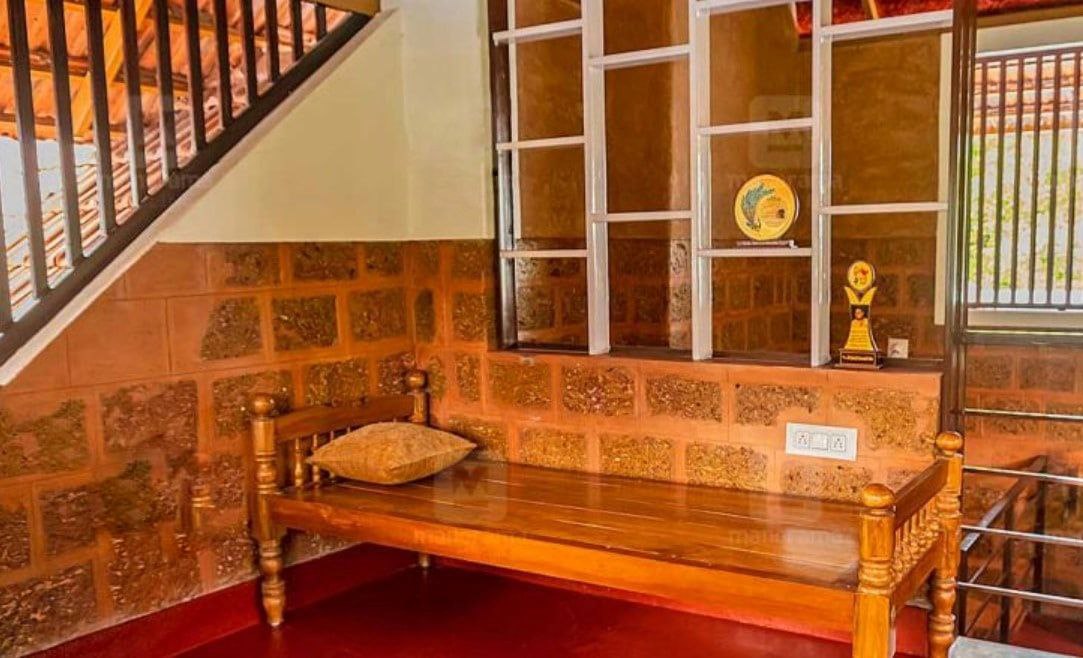
Ragesh says, “Apart from building the roof at double the height, we used red oxide for flooring instead of paint to ensure a cosy cool interior. There are no air conditioners in any room, and we rarely switch on the fans too. We used tiles only on kitchen walls to avoid the danger of leakage.”
A space that nurtures artistic possibilities
Geetham has a sitting space, living room, dining area, courtyard, kitchen, work area, two bedrooms with attached bathrooms on the ground floor, and a multi-utility space and open terrace on the first floor.
After opening the front door of the house, the guests are welcomed to the inner courtyard that resembles Kerala’s traditional Nalukettu house.
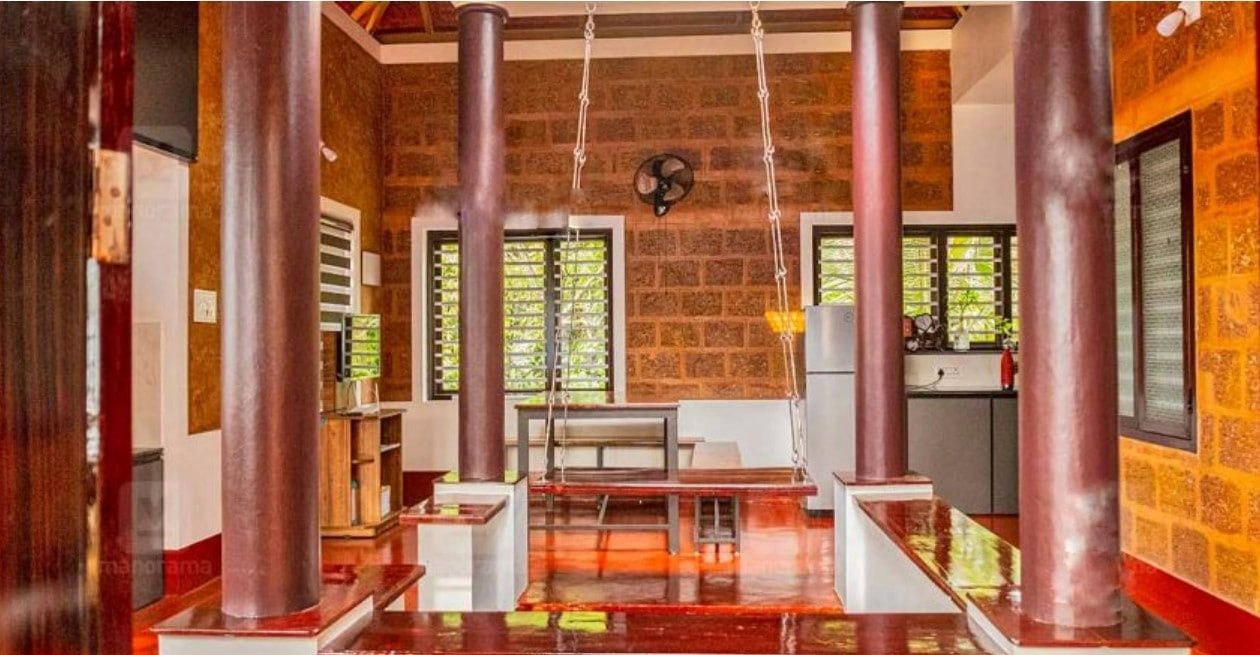
“The open courtyard brings in light all through the day, and we placed a swing in the middle which beautifies the spot. This space is the personal favourite for most of our guests, and it is also a great spot to take good pictures,” he adds.
In the 1,200-square-foot house, the 350-square-foot area on the ground floor is designed for reading, enjoying music, and hosting small get-togethers.
“This is my favourite space at home. I spend most of my free time here engaging in artistic activities. The place has big windows allowing natural light and air to come in abundantly,” says Ragesh.
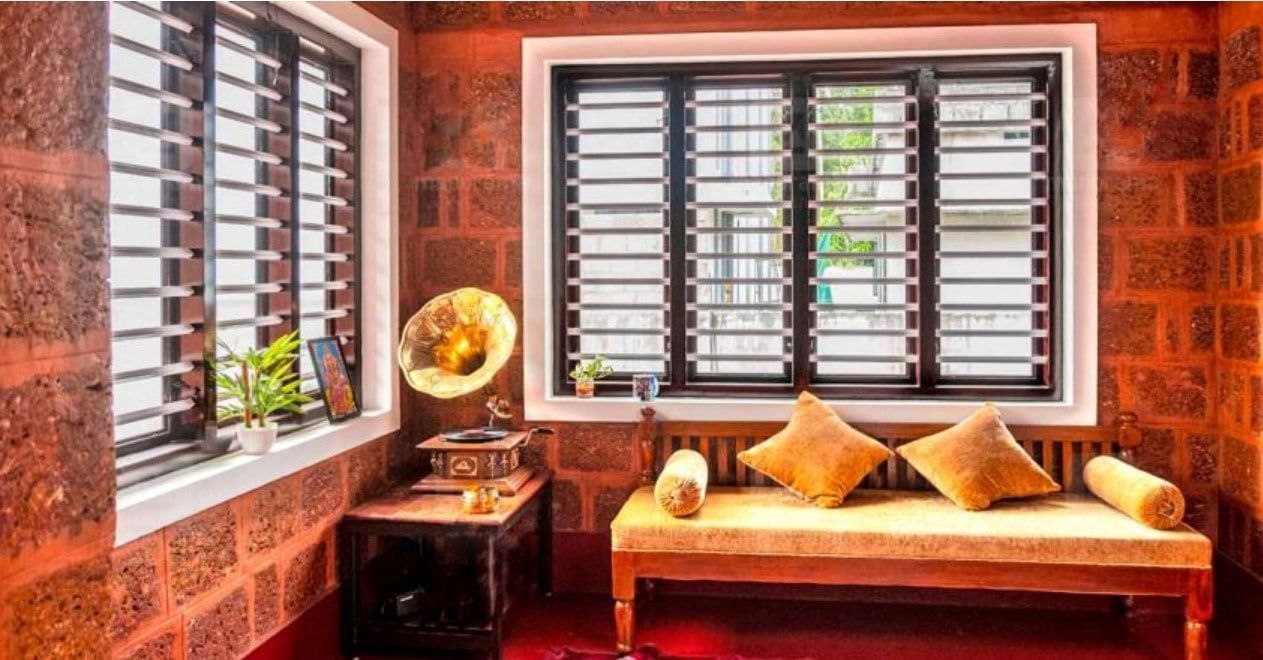
To ensure that the home remains unaffected by rising heat, the family has grown a number of trees like coconut, mango, jackfruit, neem etc around the house.
Ragesh says, “We have a nice green view of the plot from the balcony on the first floor. Though, we also use the space for washing and drying clothes.” If you found our stories insightful, informative, or even just enjoyable, we invite you to consider making a voluntary payment to support the work we do at The Better India. Your contribution helps us continue producing quality content that educates, inspires, and drives positive change. Choose one of the payment options below for your contribution- By paying for the stories you value, you directly contribute to sustaining our efforts focused on making a difference in the world. Together, let’s ensure that impactful stories continue to be told and shared, enriching lives and communities alike. Thank you for your support. Here are some frequently asked questions you might find helpful to know why you are contributing?

Architect Shantilal shares that the total cost of building this house was Rs 21 lakh. “It went slightly beyond the budget because of the rise in the price of construction materials during the pandemic-induced lockdown period. But, we completed the construction this year and the family is satisfied with how their dream home has turned out.”
Edited by Pranita Bhat; Photo credits: Shantilal
This story made me
-
97
-
121
-
89
-
167




